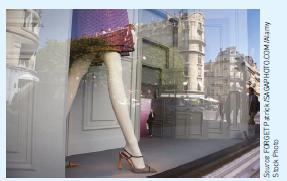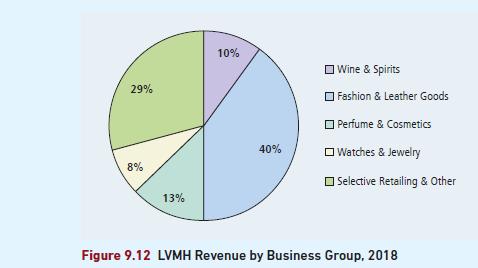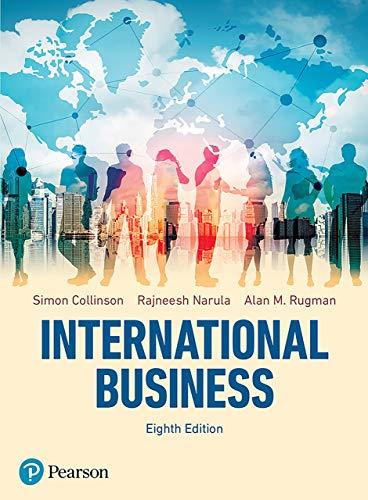LVMH is the French-based, world-leading luxury goods group that was founded in 1987 with the merger of
Question:
LVMH is the French-based, world-leading luxury goods group that was founded in 1987 with the merger of Louis Vuitton and Moët Hennessy. Christian Dior, Dom Pérignon, Givenchy and Moët & Chandon are just a few of LVMH’s world-famous luxury brand names. By 2018, revenues for the group totalled approximately $53 billion, putting it among the top five marketers of luxury items (including wines). LVMH operates approximately 4,374 stores across the world and employs more than 150,000 people, where over 70 per cent of employees work outside France. As of 2018, the company generates the bulk of its sales in foreign markets; only 6 per cent of all revenues are earned in France. The United States is the company’s single largest market, comprising 32 per cent of revenues. It is important to note that although France earns a small fraction of LVMH’s revenues, Europe as a whole (including France) accounts for 25 per cent. Japan accounts for 6 per cent, while Asia (excluding Japan) accounts for 23 per cent. The remaining 14 per cent is generated mainly in the Pacific, Latin America, and Canada. With large shares of sales in each broad region of the triad, LVMH is a true global company.
LVMH’s organisational structure is much more than that of a typical conglomerate. The whole organisation focuses on shared costs and synergies, both backward and forward in its value chain. The five main lines of business are really strategic business units (SBUs) that are set up to market well-known, high-quality products while responding to local tastes and regulations. They are: (1) ‘Fashion & Leather Goods’; (2)§ ‘Wines & Spirits’; (3) ‘Perfumes & Cosmetics’; (4) ‘Watches & Jewelry’; and (5) ‘Selective Retailing & Other’. Figure§9.12§illustrates the breakdown of revenue within each of these five business groups.
By carefully overseeing major operations from the top while allowing the individual SBUs to make the decisions that directly affect their own local markets, LVMH employs a combination of ‘tight and loose’ control to maximise its international presence. In the process, it has become the most global retail company.
The profit margin on luxury goods is very high, so control over production, distribution and advertising is central to profitability. LVMH ensures that production standards in its manufacturing operations are the highest. It centralises manufacturing by using a common laboratory for cosmetics research and integrates the operations for all the branch offices in each group to ensure maximum efficiency.


Marketing is a very important part of LVMH’s strategy. The company spends around 10 per cent of all its revenues on worldwide advertising and purchases media products in bulk to receive the best value for its money. The ‘Made in France’ label is stressed to appeal to its home country’s reputation for high-quality luxury products. The company sources only in France, Italy and Switzerland.
The vision of a totally integrated group was and continues to be an important part of the global strategy that has positioned LVMH as an industry leader. The company walks a fine line between the exclusivity required of luxury goods and the size and scope of its operations. It might operate around the world, but its products are not accessible to all.
Step by Step Answer:

International Business
ISBN: 9781292274157
8th Edition
Authors: Simon Collinson, Rajneesh Narula, Alan M. Rugman





